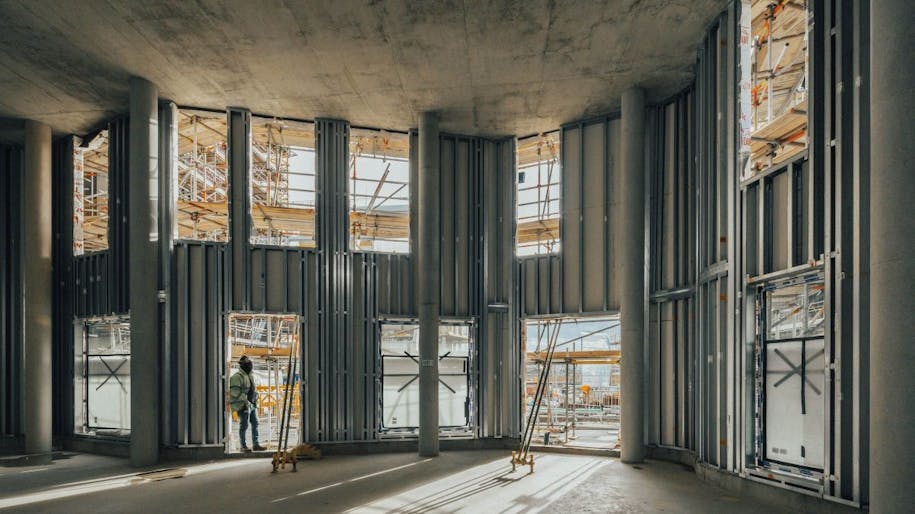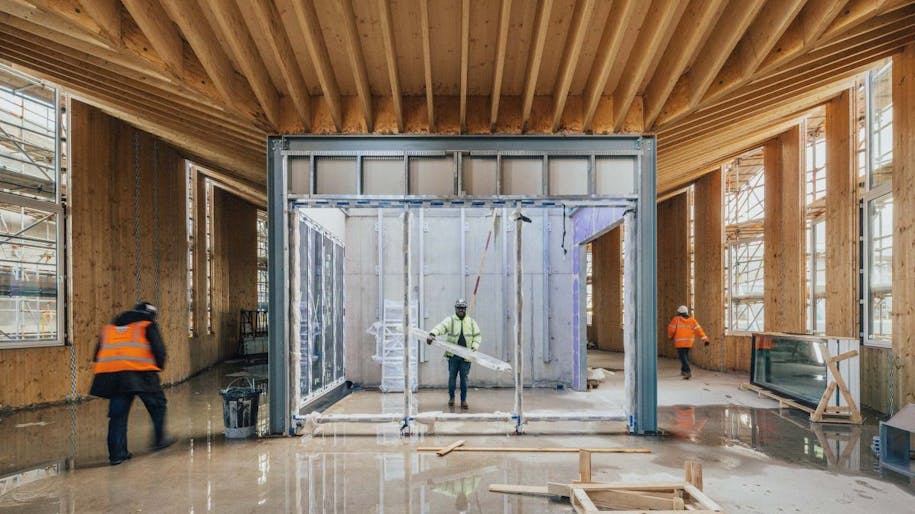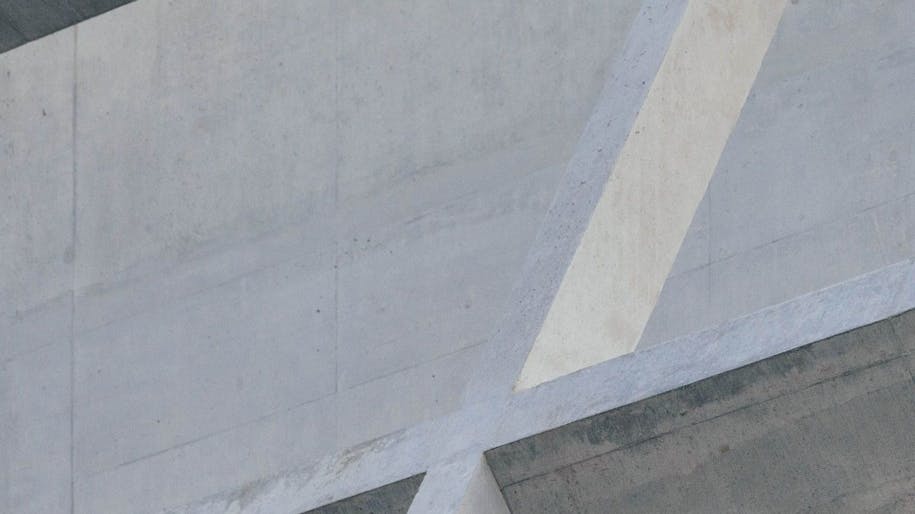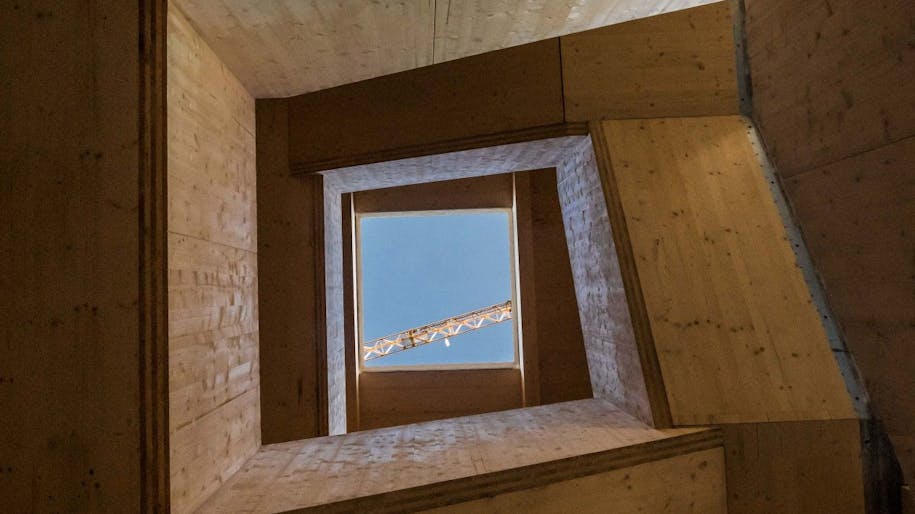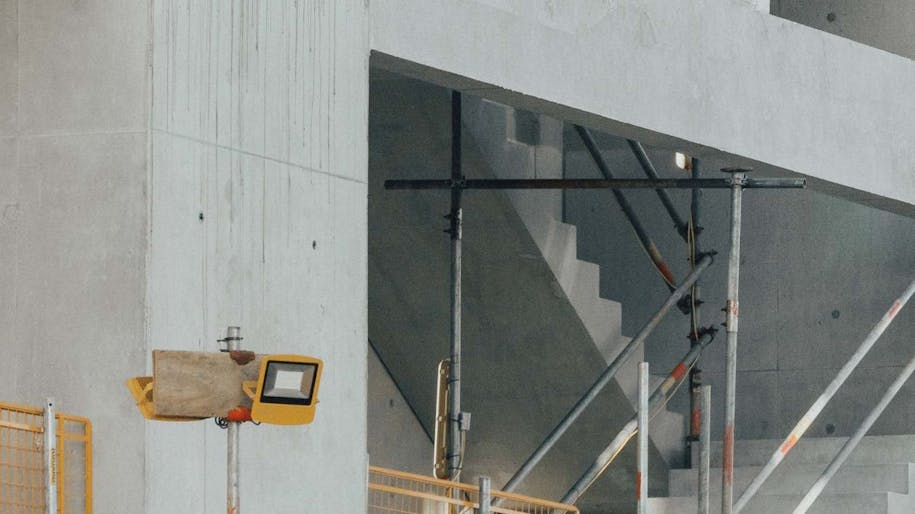
Getting Published: Taran Wilkhu and Nick Compton in Conversation
Design District is not just about providing creatives with affordable workspace. Once it opens in 2021, tenants can look forward to further support in the form of events and workshops aimed at developing skills and careers.
For a taste of what’s to come, Design District has organised a series of online conversations that bring together industry experts, starting with architectural photographer Taran Wilkhu — who has been documenting the construction process — and Wallpaper* senior editor, Nick Compton. Along with host Jemima Burrill, the pair discuss the hows (and whys) of getting work published.
Taran Wilkhu
Taran Wikhu’s career path has taken many turns. After studying law he worked in the events and travel industries, as a film festival director and even did a stint at Goldman Sachs (although not as a banker, he’s quick to clarify). It was a course in architectural photography at London College of Communication that set him on his current path, leading to Wilkhu’s work appearing in such publications as Elle Decoration, Dezeen, Monocle, The Guardian, Architectural Digest, Milk Decoration and, of course, Wallpaper*.
For more on his background, read our interview with Taran from earlier in the year.
Do it yourself (from self-build to self-publish)
It was Wilkhu’s commitment to a very personal passion project that first brought his work into the public eye. Together with writer Alice Grahame, he self-published a book on Walters Way and Segal Close, the renowned communities of self-build houses in South East London where he and his family live. When the initial print run of 200 sold out in a weekend, Wilkhu was inspired to take it to the Frankfurt Book Fair, where he scored a publishing deal with Park Books. It was at the launch of the new edition that Wilkhu met Matt Gibberd, founding director of The Modern House, who recruited Wilkhu to bring an editorial quality to his agency’s imagery.
Pay close attention
It may sound obvious, but for Wilku this is a secret hiding in plain sight. Whether it’s the sweeping curves of the Heatherwick Studio-designed Coal Drops Yard or the largely black interiors of Sir David Adjaye’s Lost House, the starting point of framing and composition is always the same: ‘I really look deeply,’ Wilku explains.
Light:
‘Light is of paramount importance, it can make or break a shot,’ Wilkhu says. As he shoots primarily with natural light, one of the first things he does when visiting a building is turn off the overheads and ‘watch the daylight.’
Geometry:
‘This is me in a nutshell,’ Wilkhu says, showing an image of Leo Hafner’s Haus Dalcher in Switzerland: ‘A winner shot… beautiful lines, great colour, that sense of light and ambiance to it…’
Context:
Wilkhu advises using furniture, landscape or people to provide a sense of place and scale in a shot.
Give something back
Wilkhu is a champion of diversity in design, working with mentoring programmes at ELBA (East London Business Alliance) and United in Design, as well as promoting organisations such as BFA (Black Females in Architecture), and co-hosting Roots to Routes, a podcast exploring the journeys of South Asian creatives in the world of design. He’s also keen to get people reading ‘some non-white literature,’ recommending Why I’m No Longer Talking to White People About Race by Reni Eddo-Lodge and The Good Immigrant edited by Nikesh Shukla.
Nick Compton
As Jemima Burrill points out, there’s making the content and then there’s the other end of the process: getting that content into print. With his illustrious career in magazines, Nick Compton is ideally positioned to share some tips. His insight is not only useful for those looking to get their work published, but also provides a candid description of the editor’s perspective.
The backstage pass
‘As an editor you’re always looking to build relationships,’ he says, describing how people in his position are keen to engage with those making interesting work. ‘You get a kind of backstage pass that gives you an excuse to go and see people and talk to them.’
Any great magazine creates its own universe
‘If you really want to write for a magazine, you have to know what that magazine’s world is,’ Compton stresses. It’s crucial to understand the mechanics — the types of stories the publication runs, the style in which they’re written.
Getting noticed
Sometimes even the most talented creatives get overlooked. Compton offers a few fundamental tips that can make all the difference.
Choose the right door:
It helps to know who on the masthead is most likely to be interested in your work. Call the magazine or look online to find the right editor to approach.
Provide visuals:
‘We have to be able to see the potential of what you’re doing,’ Compton explains. ‘We can’t commission anything unless we know there’s a nice visual story there.’
Tell your story:
Explain what it is you’re doing that nobody else is, and how you’re doing it. ‘We’re fascinated by the design process,’ Compton says. ‘We’re trying to tell stories about the decisions people make and how they make them.’
See more of Taran’s work at taranwilkhu.com
Find out more about Wallpaper* magazine at wallpaper.com
Photo credits Taran Wilkhu
